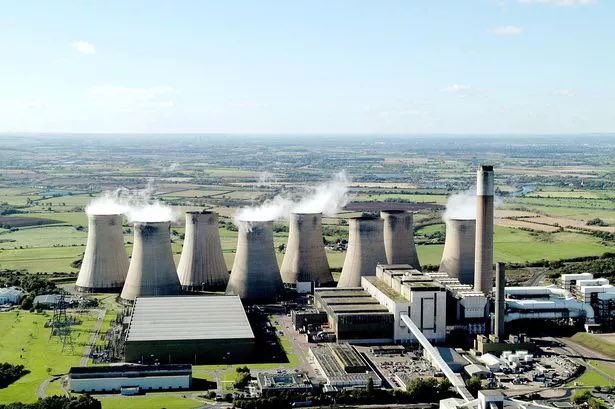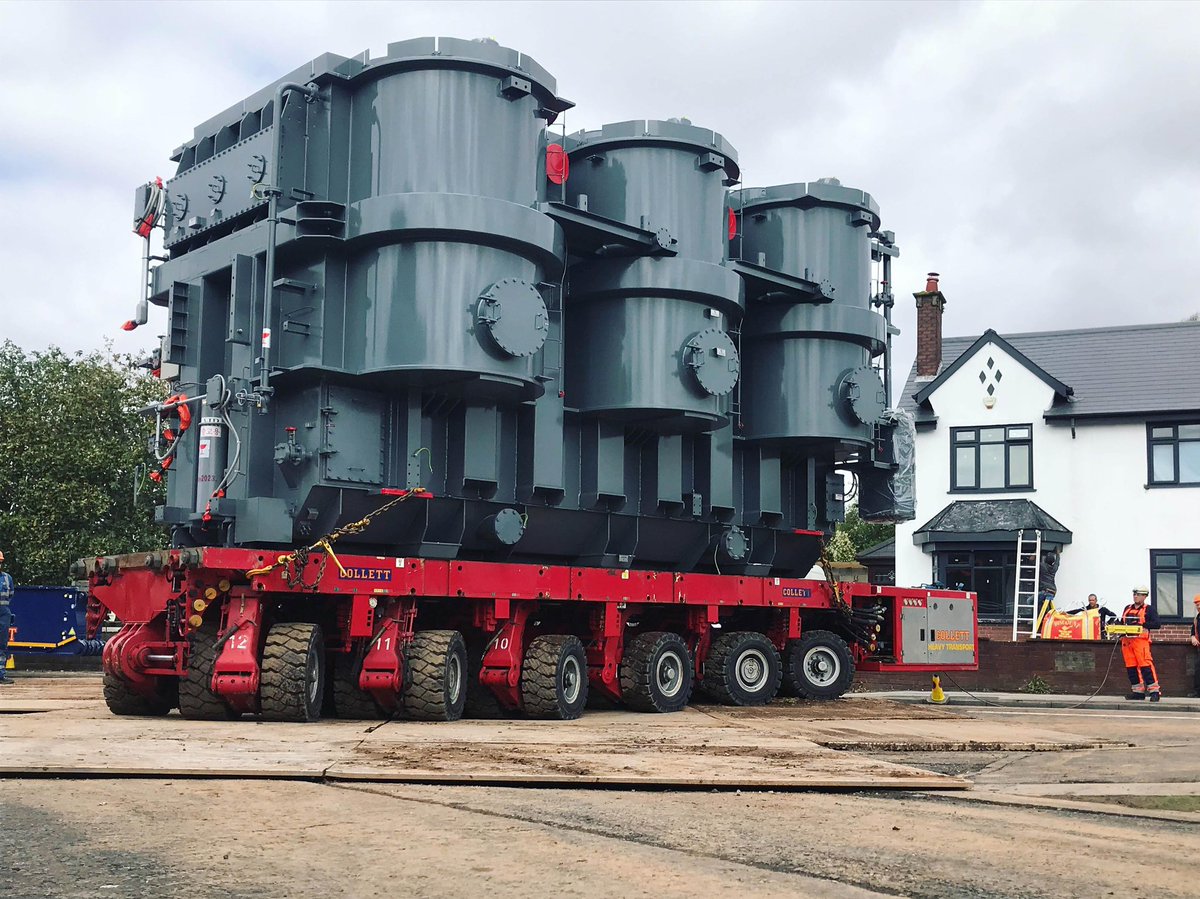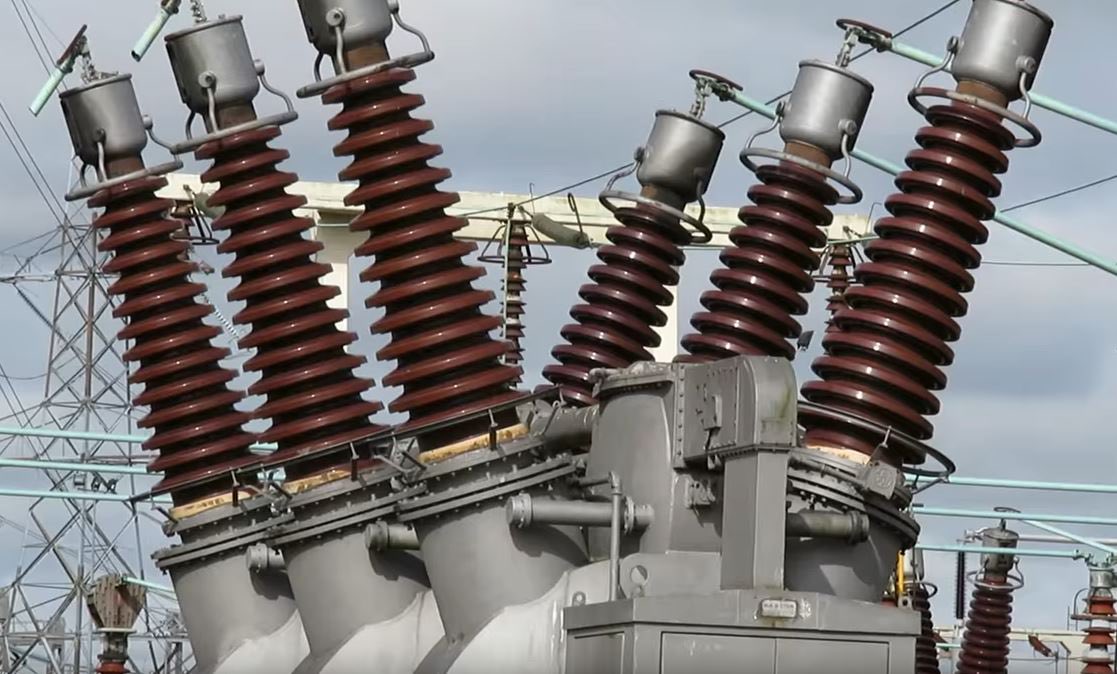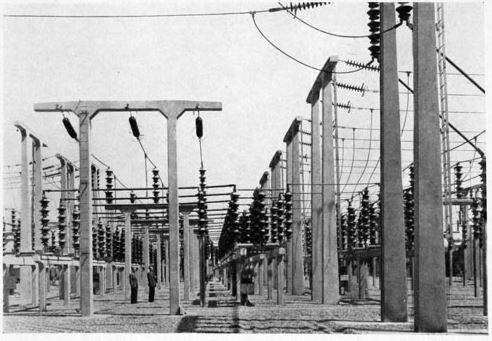A few minutes ago, Unit 4 turbo-generator at Ratcliffe-on-Soar power station desynced from the GB grid system, marking the END of electricity generation from COAL after 142 years 🇬🇧🙏🏻 @RobBurnett92 and I present a 🪡🧵on the evolution of coal fired power from 1882 to today 1/n 
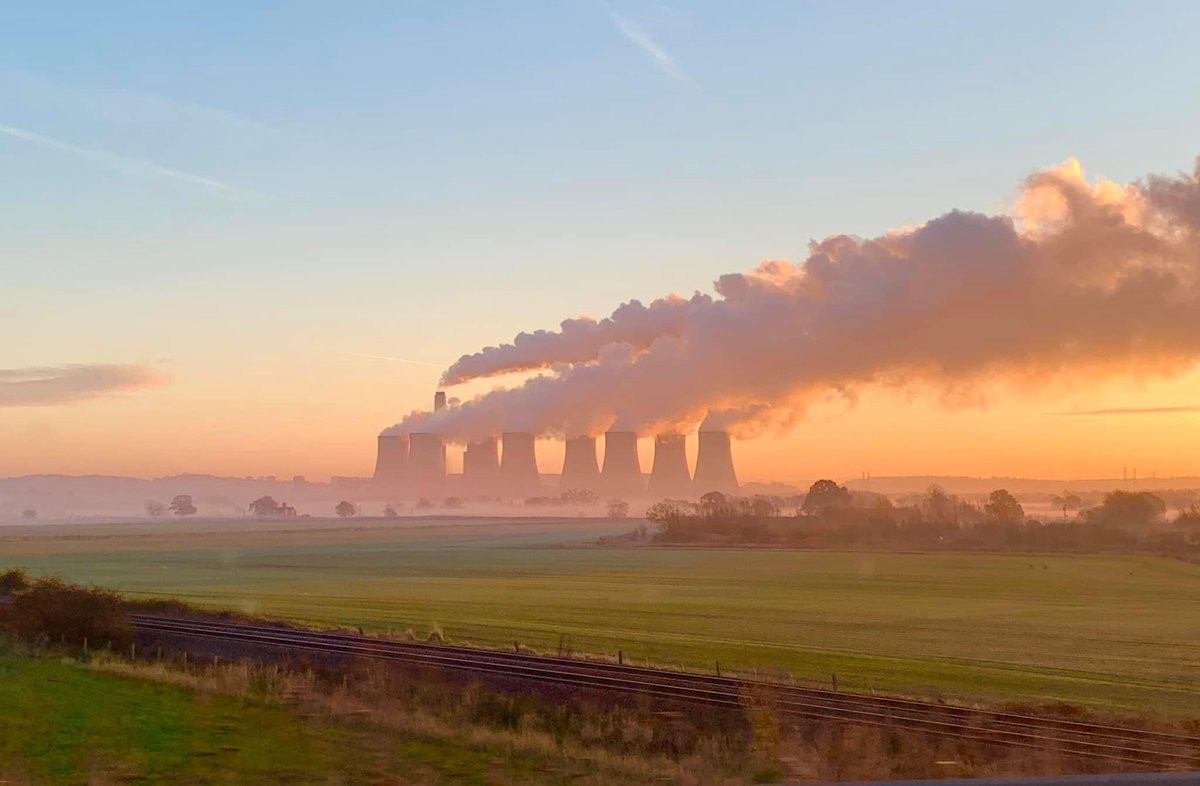
Coal totally shaped my childhood. This photo, taken before I was born, shows an exchange visit between British 🇬🇧 and German 🇩🇪 miners. One of my grandfathers is 4th from left and the other one is 1st on the right. Both passed some years ago now. Both were coal miners ⛏️🏭🔥 2/ 

I grew up in Coalville- a town which only exists due to coal. Between 1984 and 1991, 6000 men lost their jobs due to pit closures. The town still feels the impact today. Here a Class 58 takes an MGR train from Coalfields Farm Railhead down the Leicester Line to Drakelow 3/n 

All my family were miners. Most of the town were miners. I think if the pits hadn’t shut, without thinking about it too much, I’d have probably become a miner, or at least mining engineer. Incredibly, this pit was in the centre of my hometown until 1983. It’s a museum now 4/n 

This lovely graphic from @DrSimEvans & @CarbonBrief shows UK coal usage from 1700. Public electricity supply began in September 1881, about 30 years after the Industrial Revolution and 2/3rd the way up coal’s steep climb to peak demand in the mid 1950s on this graph below 👇🏻 5/n 

The first electric lighting station in England was NOT coal powered. This surprises many people but it was actually a hydro scheme 💦💦, in Godalming, Surrey. Private electric lighting schemes already existed in the homes of wealthy industrialists and early adopters 6/n








The first coal power station was at 57 Holborn Viaduct in London and was running by 12 January 1882. It used Edison Jumbo dynamos generating 110V DC, lighting Edison incandescent lamps along the viaduct and neighbouring streets. Capacity was 2,200 lamps💡🇬🇧 7/n








The boilers at Holborn were by Babcock & Wilcox supplying Porter-Allen horizontal steam engines directly coupled to the Edison Jumbo sets. Each engine and dynamo complete weighed 22 tons. This was the FIRST public power station in the world to be fuelled by coal. 8/n 

Edison’s famous station at Pearl St in New York, which also used Babcock & Wilcox boilers, Porter-Allen engines and Jumbo 110V DC dynamos, was not inaugurated until 4th September 1882. Meanwhile, the Godalming station was closed on 1 May 1884 and gas lighting restored 🔥🥴 9/n




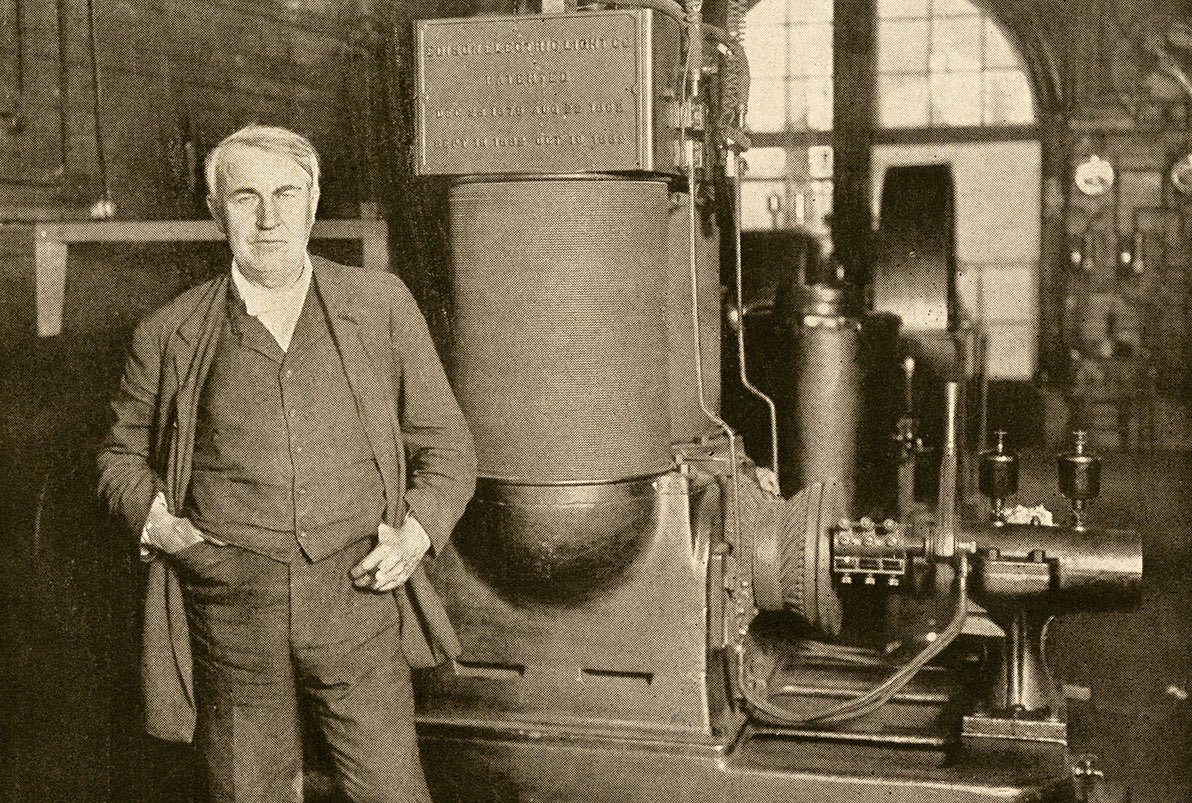


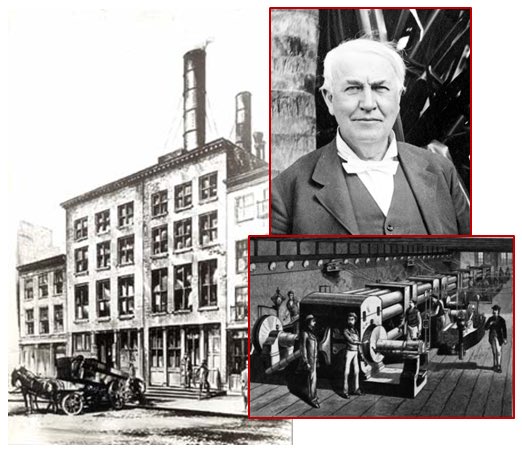
Just one month after Holborn Viaduct, the Brighton scheme under Arthur Wright, became the first undertaking to offer a supply to any consumer who desired it! It was coal powered, using Brush arc light dynamos delivering 800V DC, converting to a 100V AC supply system in 1887 10/n 

The first power station in GB to produce alternating current (AC) was at the Grosvenor Gallery on New Bond Street. This scheme was essentially the cradle of the modern power station industry, opened in 1883 by Sir Coutts Lindsay, a London socialite and impresario 🎩🕺🏻🖼️ 11/n




Lindsay wanted the most popular gallery in town and realised he needed electric lighting to set him apart. His private station expanded in 1884 as outside consumers signed up, requiring a large boiler house and chimney. A tank on the roof held 3 days’ feed water 💦 12/n 
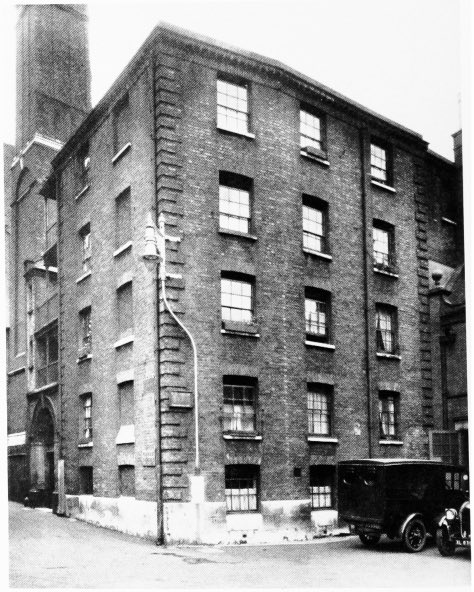
The site today is Bloomfield Place Substation - STILL powering the West End after 141 years ⚡️🤯 described by LEB as a “quart in a pint pot” it’s TIGHT! Very tight. How on earth did Lindsay get all that coal in? And ash out? Where was his stack? Amazing logistical challenge 13/n 

In 1884, Sir Charles Algernon Parsons filed two patents on his steam turbine and demonstrated the first turbo-generator in the world at his works the same year, developing 7.5kW, 100V DC, at 1800RPM. This was a defining moment in power station development (and propulsion) 14/n 

In January 1886, Sir Coutts Lindsay’s Grosvenor Gallery scheme was overloaded & problematic. He called in the 22-year-old genius who was to become the father of electricity supply & the most prolific and famous electrical engineer of the age - Sebastian Ziani de Ferranti 💙 15/n 

Ferranti quickly took charge of the engineering and got to work redesigning the system. He replaced the Siemens alternators with units of his own design and totally rewired the flawed Gaulard & Gibbs system of distribution. His alternators were 34 tons each 🏋️🤯 and 9’6 tall 16/n 

Sir Coutts Lindsay founded the London Electric Supply Corporation in August 1887, with Ferranti as its 23-year-old Chief Engineer. They planned to supply electricity to London on a really large scale, using previously unimaginable 10,000 volts for primary distribution 😳💪🏻 17/n 

Ferranti realised the future of efficient electricity supply lay with LARGE generators, sited by fuel (=COAL) and water, on cheap land, with the power distributed to the load centres at high voltage, then stepped down again at consumer premises. In 1887 he masterminded it 👨🏻🔧 18/n 

The company chose land by the Thames at Deptford, with easy access to cooling water and coal, and set about building the biggest power house in the world, designed and supervised by Ferranti, day and night! It would have a capacity of 2 million lamps 💡19/n








The ambitious Deptford scheme forced Ferranti and LESCo engineers to solve many fundamental problems in electricity supply engineering that we now take for granted. There was nothing quite like it in the world at that time. Ultimate capacity 120,000 HP, 10,000V AC 83.33Hz 20/n




Shown here in the 1970s, 66kV & 22kV switch houses in foreground, the heart of Ferranti’s original 1888 station is to the rear, on the Stowage. The West station was a Gilbert Scott design. All demolished and luxury flats now. The birthplace of HV AC power engineering 🇬🇧😍 21/n 

Ferranti invented the world’s first paper insulated HV power cable to take the 10kV current from Deptford to the Grosvenor Gallery and Trafalgar Square (substations). Here’s a GENUINE piece of it in Prof Hannah Fry’s hand when she came to visit us. 22/n




Ferranti had a bust up with LESCo in August 1891 and resigned, to resume his career in manufacturing. LESCo pressed on, with a few mishaps along the way, before becoming part of LPC in 1925. A new steam turbine at Deptford in 1933 is dwarfed by Ferranti’s alternator armature 23/n 

Let’s not underestimate the cost & aggravation of carting coal into the heart of central London at the Gallery & carting ash away after. Transferring generation to Deptford was a HUGE cost saving, with coal arriving by barge (below 1889), and ash being removed similarly. 24/n 

Ferranti had made LESCo the most technologically advanced electrical utility in the world and pushed boundaries. He laid the foundations of the system of electricity supply we then used for the next 100+ years. His contribution to electrical engineering is inestimable 🙌🏻🙌🏻💙 25/n 

• • •
Missing some Tweet in this thread? You can try to
force a refresh


